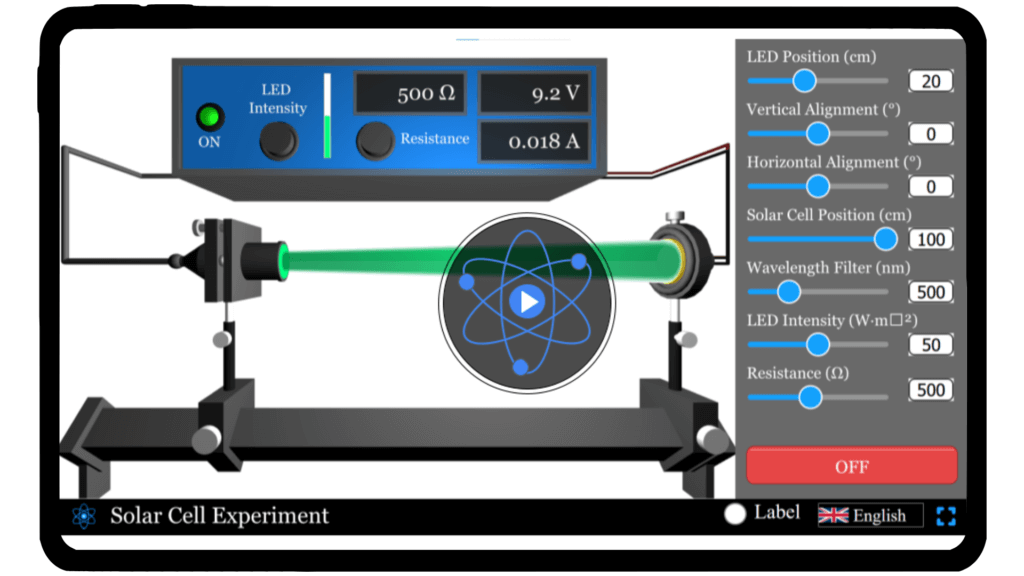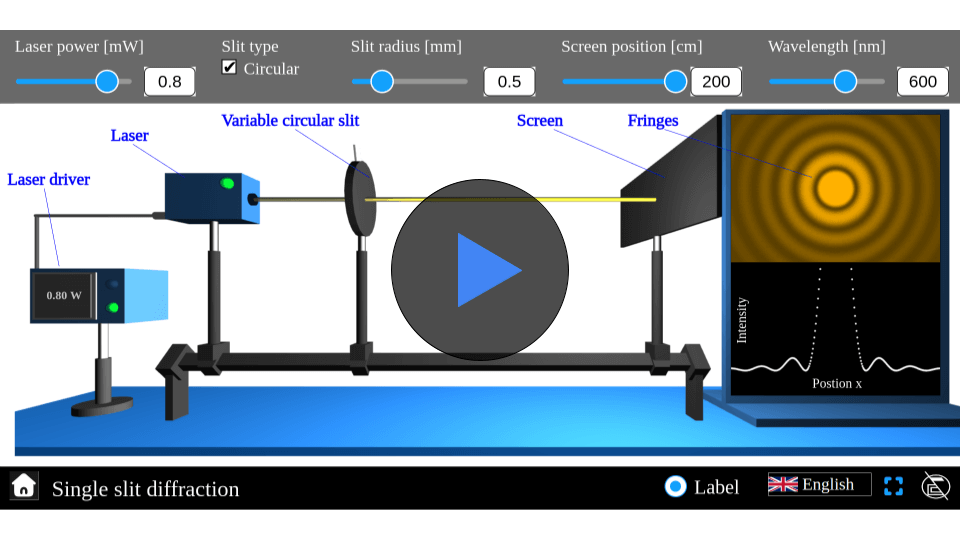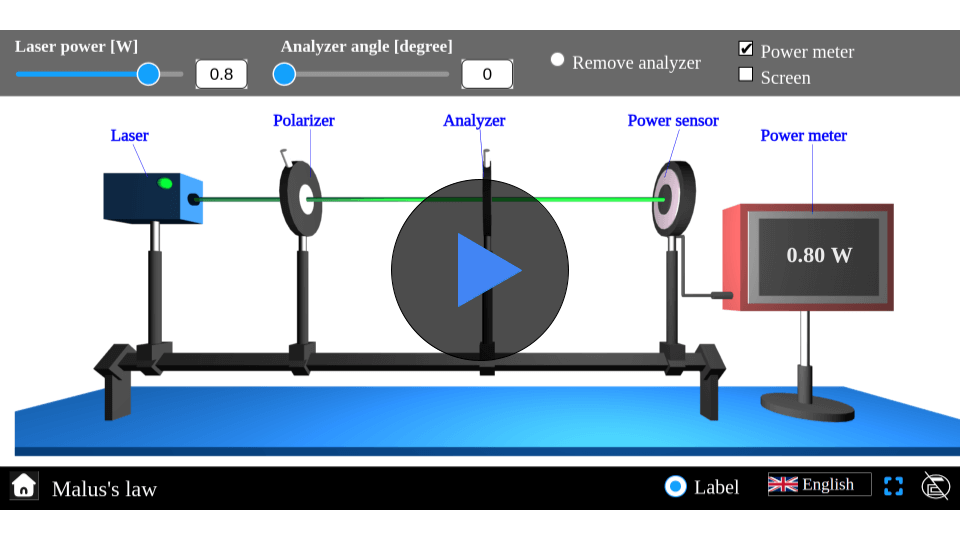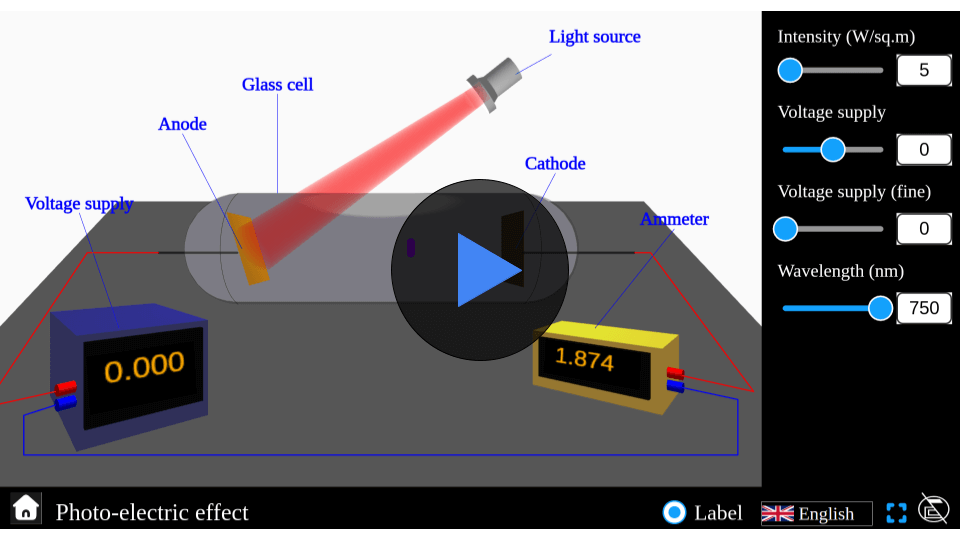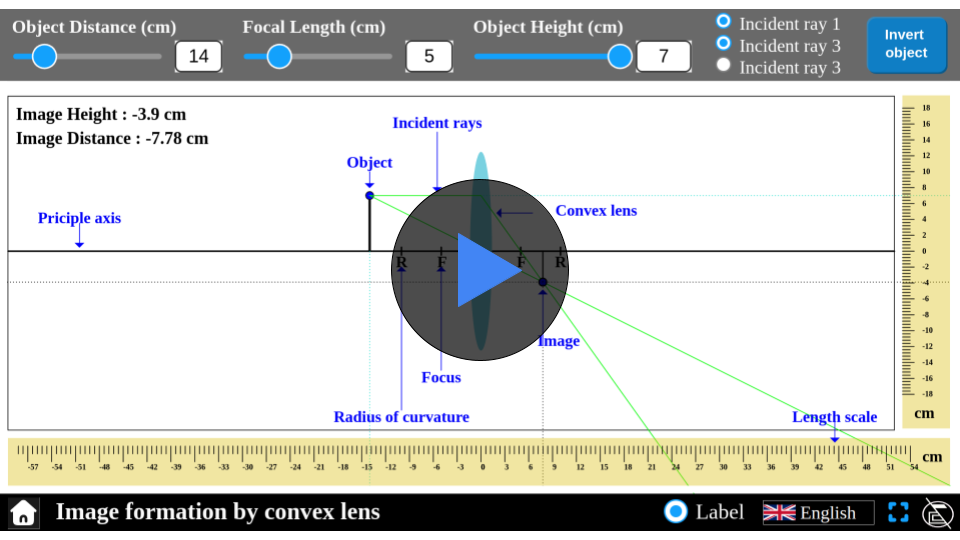Solar cell Simulator
Explore the working of solar cells and experiment with varying light intensities, wavelengths, and material properties to study photovoltaic conversion using our interactive simulator.
Solar cell
The Sun powers life on Earth, but did you know it can also power your devices? Solar cells harness sunlight and turn it into usable electricity, thanks to the fascinating physics of the photovoltaic effect. With our interactive simulator, you can explore this process firsthand. Adjust parameters like light intensity, wavelength, or material properties, and see how they affect a solar cell’s efficiency. Discover the science behind renewable energy and experiment with solar cells today!
\begin{align}
\text{Photovoltaic Current:} \quad & I_\text{ph} = q \cdot \eta_\text{ext} \cdot \frac{P_\text{in}}{h\nu} \\
\text{Diode Equation (Net Current):} \quad & I = I_\text{ph} – I_0 \left( e^{\frac{qV}{n k_B T}} – 1 \right) \\
\text{Output Power:} \quad & P_\text{out} = I \cdot V \\
\text{Conversion Efficiency:} \quad & \eta = \frac{P_\text{out}}{P_\text{in}} \times 100\% \\
\text{Fill Factor:} \quad & FF = \frac{V_\text{mp} \cdot I_\text{mp}}{V_\text{oc} \cdot I_\text{sc}}
\end{align}
Mathematical description
where:
\( I_\text{ph} \) is the photocurrent generated by the solar cell
\( q \) is the elementary charge of an electron (
1.602×10−19C)
\( \eta_\text{ext} \) is the external quantum efficiency of the solar cell
\( P_\text{in} \) is the incident power of sunlight on the solar cell
\( h \) is Planck’s constant (
6.626×10−34Js)
\( \nu \) is the frequency of the incident light
\( I_0 \) is the reverse saturation current of the diode
\( V \) is the voltage across the solar cell
\( n \) is the ideality factor of the diode
\( k_B \) is Boltzmann’s constant (
1.381×10−23J/K)
\( T \) is the absolute temperature of the solar cell in Kelvin
\( I \) is the net current output of the solar cell
\( P_\text{out} \) is the electrical output power of the solar cell
\( \eta \) is the conversion efficiency of the solar cell
\( FF \) is the fill factor of the solar cell
\( V_\text{mp} \) is the voltage at maximum power point
\( I_\text{mp} \) is the current at maximum power point
\( V_\text{oc} \) is the open-circuit voltage
\( I_\text{sc} \) is the short-circuit current
FAQs on Solar cell
Qus 1. What is the basic principle behind a solar cell?
A solar cell works on the photovoltaic effect, where light energy (photons) striking a semiconductor material excites electrons, generating an electric current.
Qus 2. What materials are used in a typical solar cell?
Most solar cells are made of silicon, either monocrystalline, polycrystalline, or amorphous. Other materials include gallium arsenide (GaAs), cadmium telluride (CdTe), and perovskites in advanced designs.
Qus 3. How does light intensity affect the output of a solar cell?
The output current of a solar cell increases with light intensity, but the voltage changes only slightly. Therefore, the total power output rises with brighter illumination.
Qus 4.What is the role of the p-n junction in a solar cell?
The p-n junction creates an internal electric field that separates the photo-generated electrons and holes, allowing them to move toward opposite electrodes and produce current.
Qus 5. What factors affect the efficiency of a solar cell?
Efficiency depends on:
Material type and purity
Temperature
Wavelength of incident light
Surface reflectivity and coating
Series and shunt resistances
Qus 6. Can solar cells work without direct sunlight?
Yes, but with reduced efficiency. Solar cells can still generate some electricity from diffused or indirect light, though performance is lower on cloudy or indoor conditions.
Qus 7. How is the performance of a solar cell measured?
It’s measured by current-voltage (I–V) characteristics, fill factor (FF), and conversion efficiency (η)—which indicates how much of the incident solar energy is converted into usable electricity.
